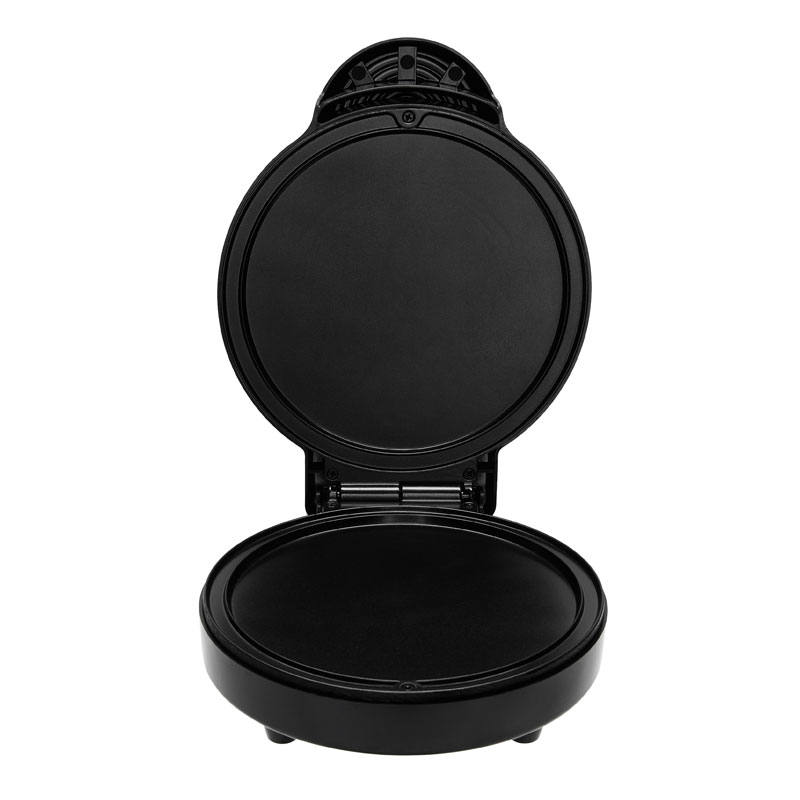How safe is the non-stick coating on electric pizza makers?
2025-08-08
The safety of an electric pizza maker's nonstick coating generally depends on the coating's material and quality. Common nonstick coatings include Teflon, ceramic, and some metal coatings. The safety of each coating is closely related to its material, usage conditions, and maintenance.
1. Teflon Coating
Material: Teflon is a fluoride coating commonly used on the surfaces of nonstick pans and cookware.
Safety: Teflon coating is relatively safe under normal operating temperatures.
High Temperature Risk: When heated above 260°C, Teflon coating may begin to decompose, releasing harmful gases, especially toxic gases if overheated.
Avoid overheating during use and avoid damaging or scratching the coating. Damage to the coating increases the risk of it peeling off and entering food.
Food Contact: If the nonstick coating is intact, it is generally safe for food contact. However, prolonged wear or high-temperature use may cause the coating to peel off, compromising food safety.
2. Ceramic Coating
Material: Ceramic coatings are typically made from natural materials such as silicon oxide. They are widely used in kitchen appliances because they are heat-resistant, non-toxic, and environmentally friendly.
Safety: Ceramic coatings are generally considered safer, containing no harmful chemicals and therefore safe under normal use.
The disadvantage of ceramic coatings is that they are more susceptible to damage and peeling, especially at high temperatures or under improper use. If the coating peels off, it may affect food safety.
Compared to Teflon, ceramic coatings are more heat-resistant, but overheating should still be avoided.
3. Metal Coating
Material: Stainless steel or other metal coatings are typically achieved through a surface treatment process.
Safety: Metal coatings are generally very durable and not prone to peeling or damage. They do not release toxic substances and are not prone to chemical reactions with food, making them relatively safe for long-term use.
Metal coatings such as stainless steel or aluminum alloys are less susceptible to scratching, but temperature control is still necessary when used in high-temperature environments.
Usage and Maintenance Precautions:
Temperature Control: Regardless of the type of non-stick coating, excessive heat should be avoided. Follow the appliance's operating instructions and avoid overheating.
Avoid scratching: Scratches or damage to the non-stick coating can cause it to flake off, affecting its lifespan and safety. Therefore, it's best to avoid using metal tools during operation.
Inspect the coating regularly: Regularly inspect the electric pizza maker's coating for wear or damage. If damaged, consider replacing or repairing it.
Cleaning: Use a soft, non-abrasive cloth or sponge to clean, avoiding hard objects such as steel wool to prevent damage.
In summary: The safety of a non-stick coating is closely related to its material, operating temperature, and maintenance. With normal use and proper maintenance, the non-stick coating of an electric pizza maker is generally safe. To ensure safety, avoid overheating the device, prevent damage to the coating, and use appropriate cleaning tools. If the non-stick coating is damaged or worn, it is recommended to replace the device or coating promptly.





